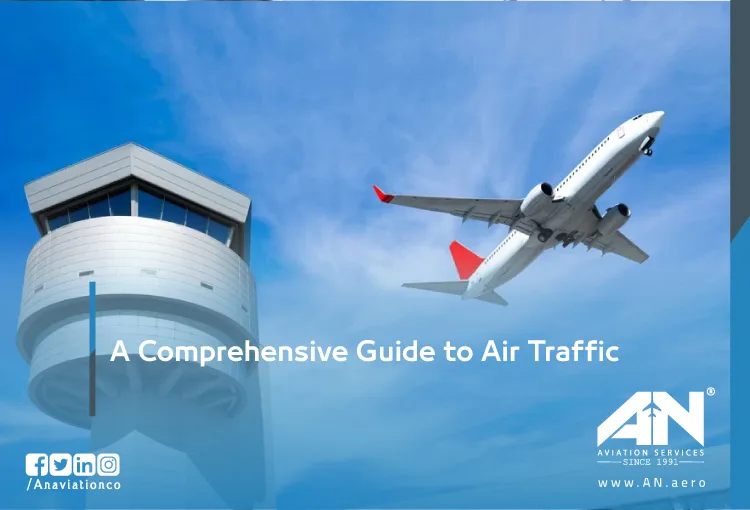
We dive into the intricate world of air traffic management. From the moment an aircraft takes off to its safe arrival at its destination, a complex network of control facilities and dedicated professionals ensures smooth operations in the skies. In this guide, we’ll navigate through the key elements of air traffic services and the vital role they play in ensuring the safety and efficiency of air transportation.
What is air traffic?
Air traffic refers to the movement of aircraft through the national airspace. It involves various control facilities such as airport control towers, route traffic control centers, and en route centers, all managed by the Federal Aviation Administration (FAA).
These facilities work together to ensure the safe and efficient flow of air transportation. Air traffic controllers monitor the movement of aircraft in real-time, providing crucial information and instructions to pilots to ensure the safety of flights. In essence, air traffic encompasses the coordination and management of aircraft movements to facilitate smooth and orderly air transportation.
Importance of air traffic at airports
Air traffic at airports is of paramount importance for the safe and efficient operation of air transportation. Airport control towers, terminal radar approach control (TRACON) facilities, and en route centers play key roles in managing the movement of aircraft within the national airspace. Air traffic controllers monitor and coordinate the arrival, departure, and movement of planes to ensure smooth traffic flow and prevent conflicts or delays.
Their vigilance and guidance are crucial for maintaining safe separation between aircraft and facilitating the movement of flights in and out of the airport. Additionally, air traffic controllers provide pilots with essential information, such as weather updates and traffic advisories, to help them navigate through the airspace safely. Without effective air traffic management, airports would face increased risks of accidents, congestion, and disruptions to flight schedules. Thus, the importance of air traffic at airports cannot be overstated, as it ensures the safety and efficiency of air transportation for passengers and crew alike.
Who control air traffic?
Air traffic is controlled by air traffic controllers who work under the supervision of the Federal Aviation Administration (FAA). These controllers operate from various control facilities, including airport control towers, route traffic control centers, and en route centers.
Their primary responsibility is to monitor and manage the movement of aircraft within the national airspace, ensuring safe separation between flights and guiding them through takeoff, landing, and en route phases of flight. Air traffic controllers use radar, communication systems, and sophisticated software to track aircraft and provide instructions to pilots. Their expertise and vigilance are essential for maintaining the safety and efficiency of air transportation.
The Role of Air Traffic Controllers
Air traffic controllers are the heroes of the skies. From tower controllers overseeing aircraft movements at airports to terminal radar approach control (TRACON) facilities managing traffic in busy terminal areas, these professionals play a crucial role in guiding the movement of aircraft. Working under the Federal Aviation Administration (FAA), air traffic controllers monitor the skies 24/7 to ensure the safety and efficiency of air transportation.
What are the types of air traffic?
Air traffic encompasses various types of aircraft movements within the national airspace. These include:
- Commercial flights transport passengers and cargo between airports.
- While private jets cater to individuals or companies for business or leisure travel.
- Cargo planes transport goods and freight, facilitating global trade and commerce.
- Military aircraft perform defense and security operations, including training exercises and reconnaissance missions.
- General aviation aircraft encompass a wide range of private and recreational flying activities, such as flight training, sightseeing tours, and personal travel.
Each type of air traffic has its own specific requirements and considerations, but collectively they contribute to the overall activity and movement within the airspace.
What is an air traffic restriction?
An air traffic restriction is a measure put in place to limit or control the movement of aircraft within a certain area or airspace.
These restrictions can be temporary or permanent and are implemented for various reasons, such as security concerns, airspace congestion, or hazardous weather conditions. They may involve imposing altitude restrictions, establishing no-fly zones, or rerouting air traffic away from specific areas.
Air traffic restrictions are typically communicated to pilots through official notices and aviation authorities to ensure compliance and safety. These measures help to mitigate risks and maintain the orderly flow of air traffic, ensuring the safety and efficiency of aviation operations.
Traffic Flow Management
Traffic flow management is the process of coordinating the movement of aircraft to minimize delays and congestion. En route control centers play a key role in this process, strategically routing traffic to avoid conflicts and optimize efficiency. By monitoring traffic flow in real-time, controllers can adjust routes and altitudes to maintain safe separation and smooth operations.
Conclusion
As we conclude our journey through the world of air traffic management, it’s clear that this intricate system relies on the expertise and dedication of countless professionals. From control towers to en route centers, each facility plays a vital role in ensuring the safety and efficiency of air transportation. By working together seamlessly, air traffic controllers ensure that every flight reaches its destination safely and on time. So, the next time you look up at the sky, remember the unsung heroes who masterfully navigate the skies above.

